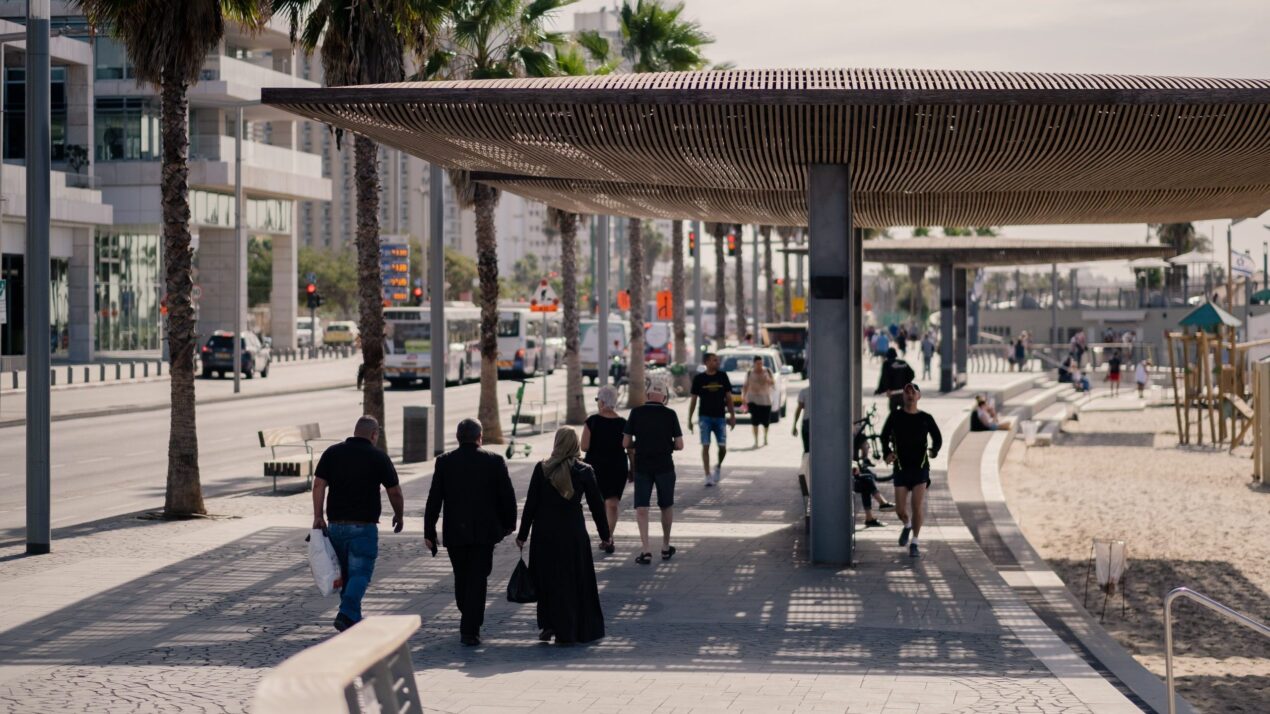
Policy Solution
Public shading structures
Commitment

Summary
Shading structures can provide comfort for pedestrians and also serve as public space. Shade can come from nature-based solutions like trees or manmade structures. Shade can also extend to public transportation lanes and stops (see “Cooled transit stations”).
Implementation
Include shading in the public realm as part of master plans to implement in appropriate areas such as park and pedestrian corridors. This may include introducing shade requirements and removing barriers to implementing shading structures.
Considerations for Use
Shade in the form of tree canopy and public space is often disproportionately distributed throughout neighborhoods and areas with vulnerable populations should be prioritized for pilot programs.
Overview
Climate:
Cold, Hot/Dry, Hot/Humid, TemperatePolicy Levers:
CommitmentGovernments set ambitious goals or targets to guide prioritization and investment.Trigger Points:
City planning processesIncludes city initiatives such as the development of climate action plan, pathway to zero-energy, master plan, transit plan, energy mapping etc.Evaluating or initiating major city infrastructure projectsIncludes projects such as city transit, street or utilities construction / re-construction etc.Preparatory measures (actions to establish authority to act)Actions to establish/ensure the authority to act when appropriate trigger-points occur.Intervention Types:
Buildings and Built FormSectors:
Arts and Culture, Informal Settlements, Parks
Case Studies
Impact
Target Beneficiaries:
Heat-vulnerable communities, ResidentsPhase of Impact:
Risk reduction and mitigationMetrics:
Area of increased shading
Implementation
Intervention Scale:
City, SiteAuthority and Governance:
City governmentImplementation Timeline:
Short-term (1-2 Years)Implementation Stakeholders:
CBOs, City governmentFunding Sources:
Grants and philanthropy, Public investmentCapacity to Act:
High, MediumBenefits
Cost-Benefit:
LowPublic Good:
HighGHG Reduction:
LowCo-benefits (Climate/Environmental):
Reduce greenhouse gas emissionsCo-benefits (Social/Economic):
Build social cohesion, Improve human health, Improve the public realm
